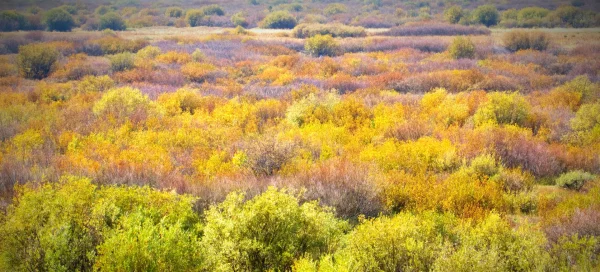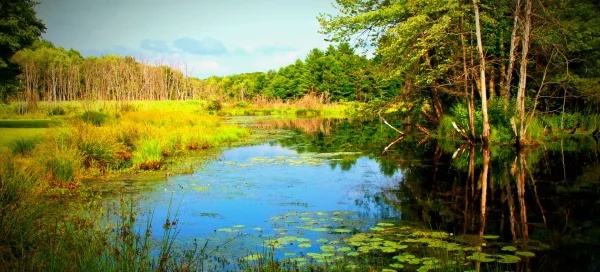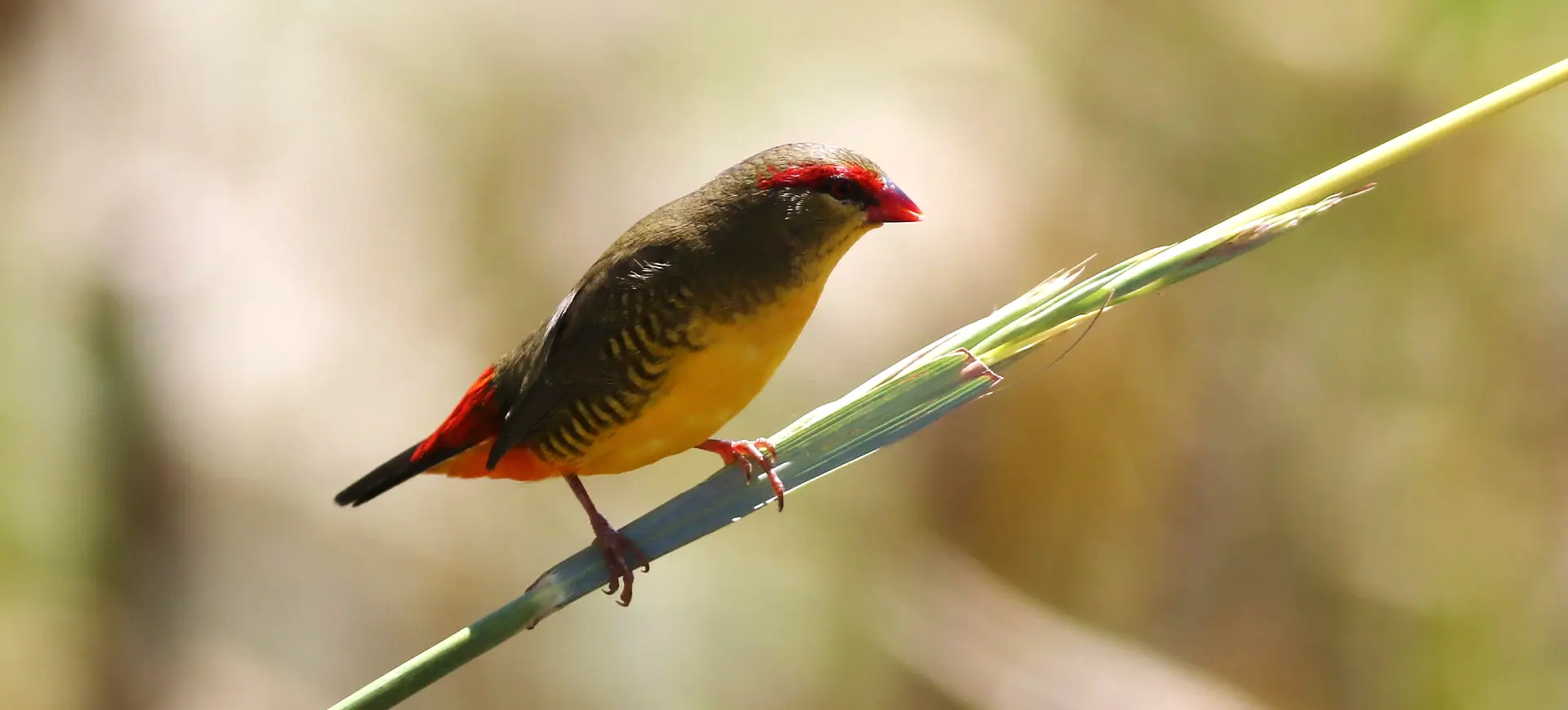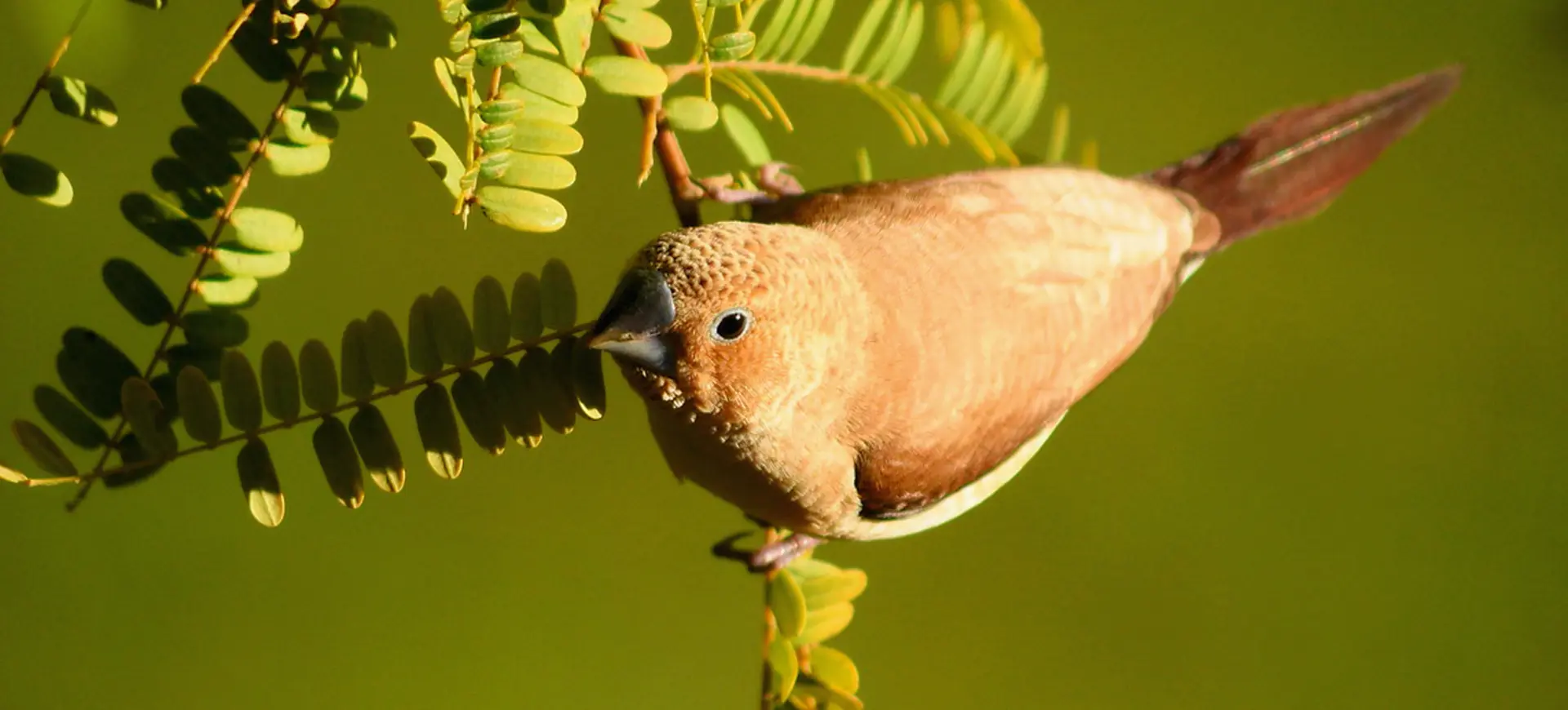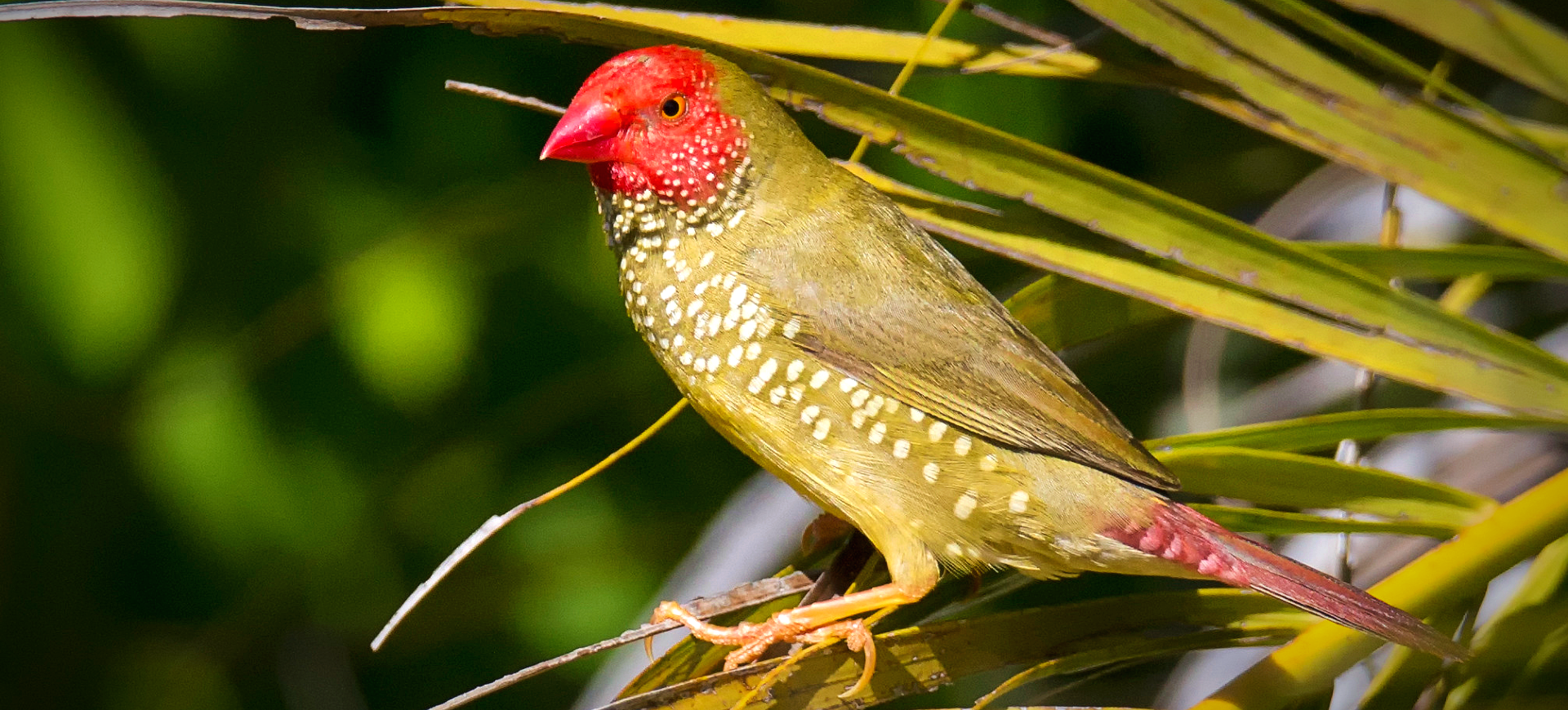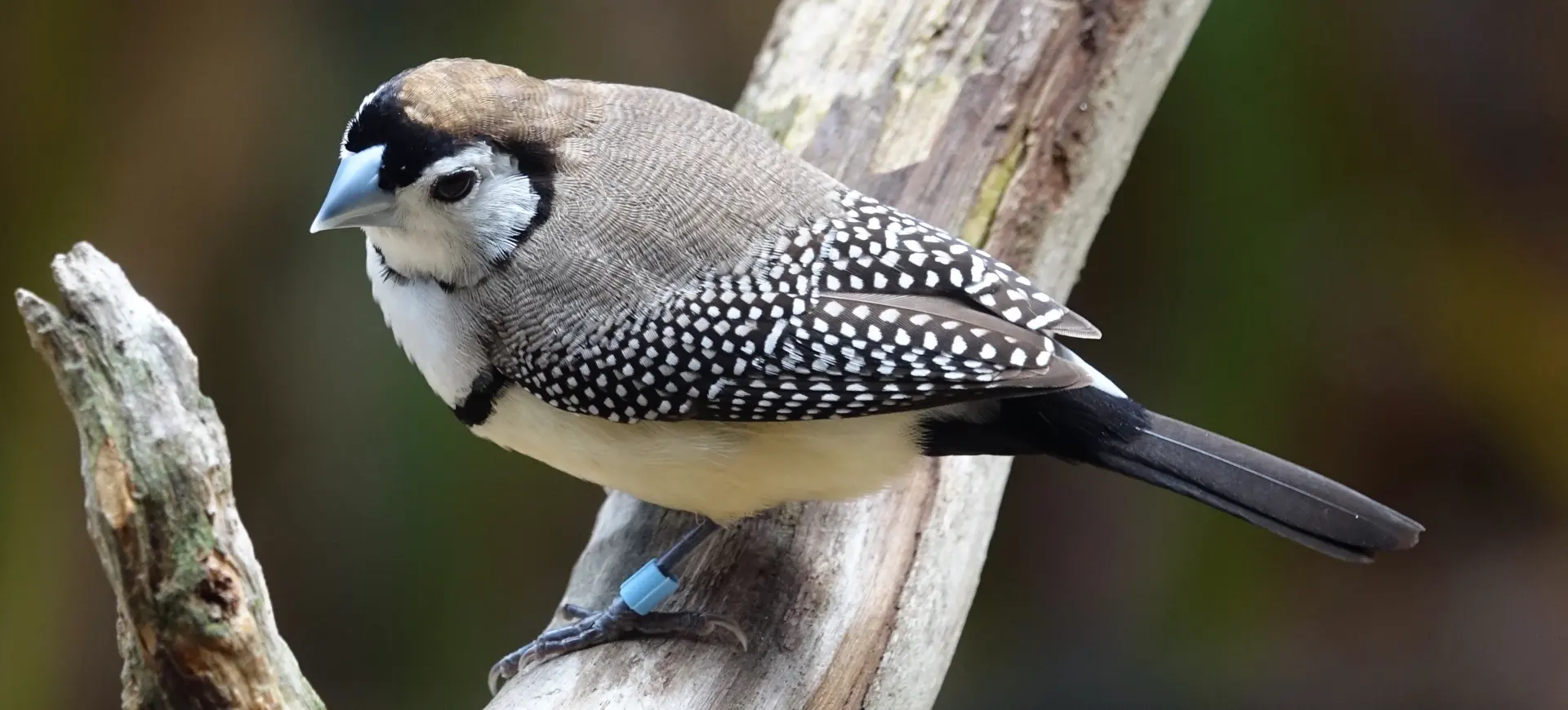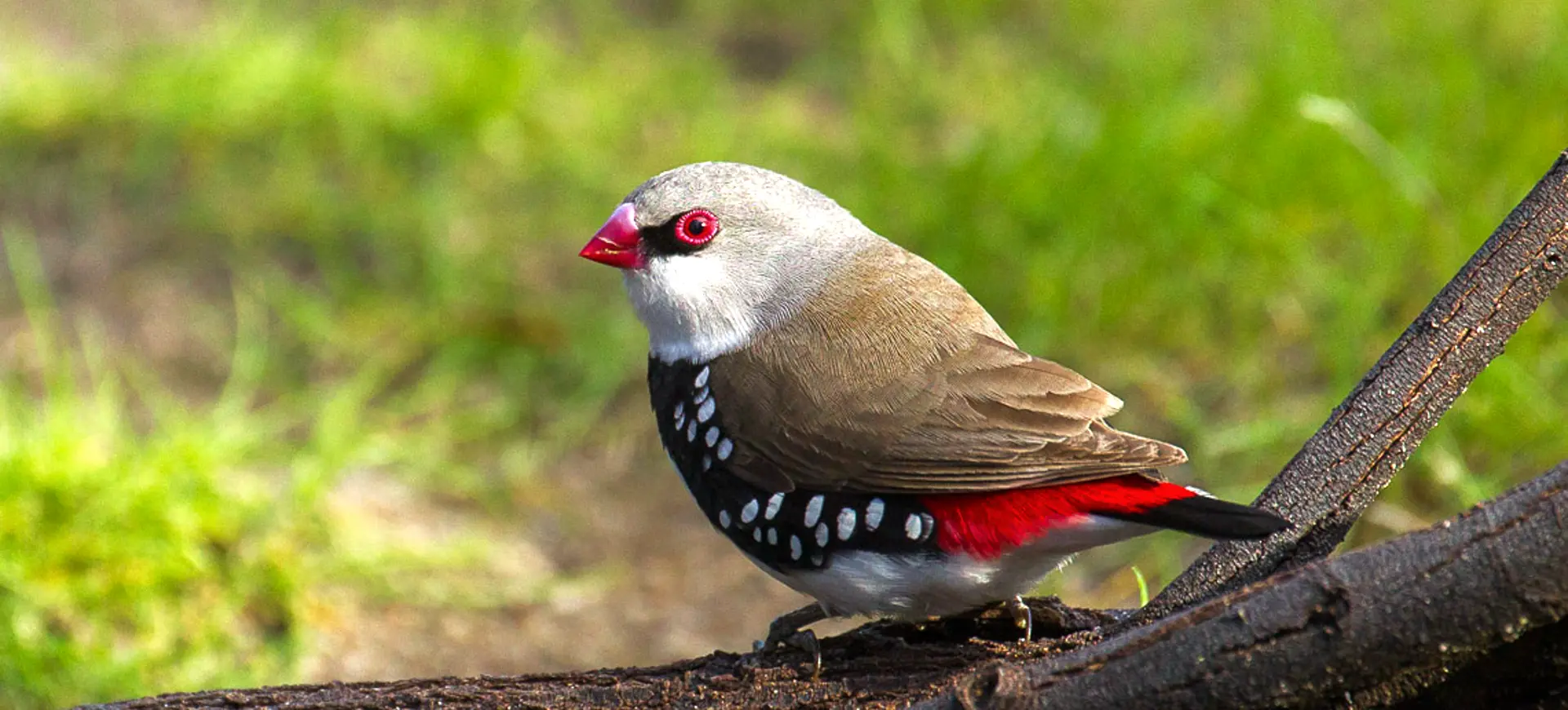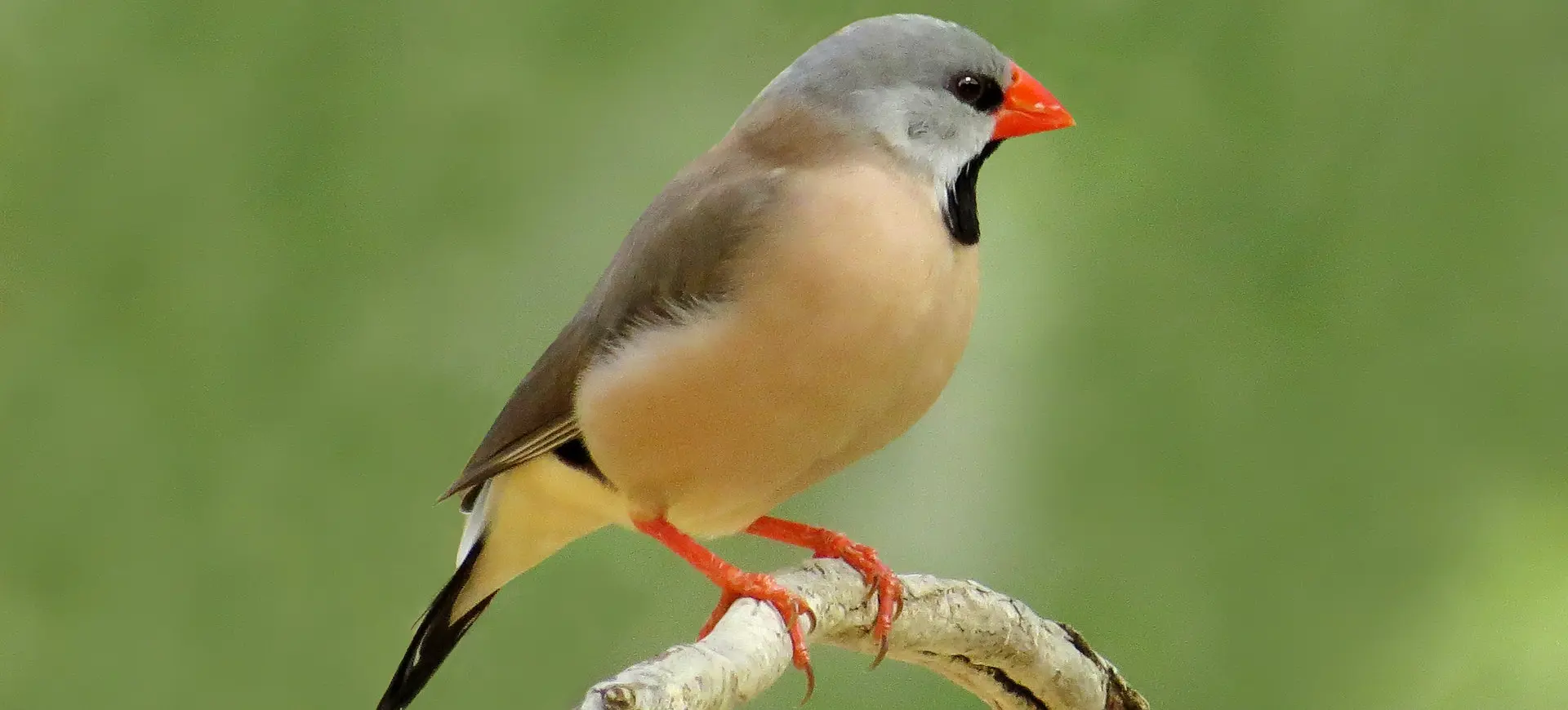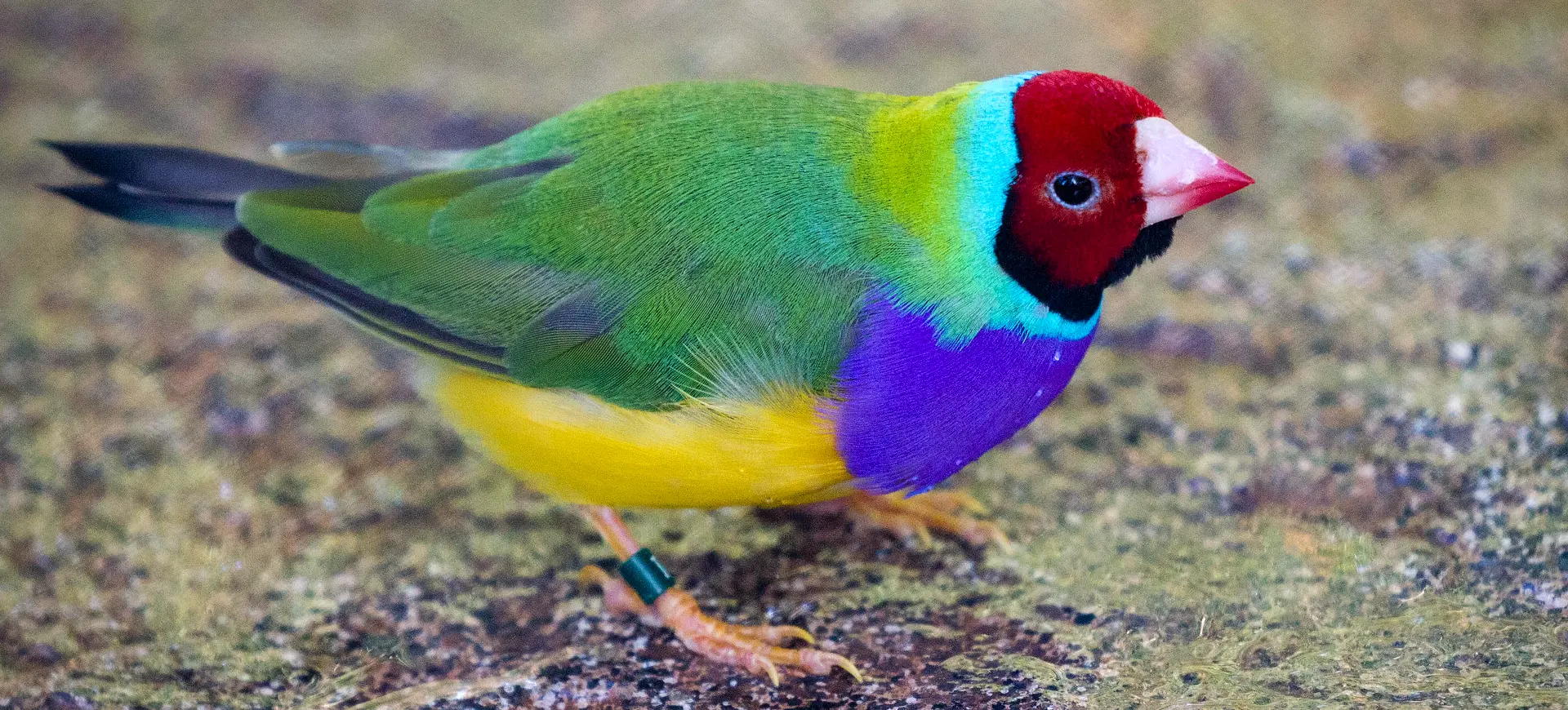Overview
The Plum-headed Finch, Neochmia Modesta, is a distinctive bird species native to Australia, known for its vibrant plumage and friendly nature. Males exhibit a striking plum-colored head from which the species derives its name, contrasting with their greyish body and olive-green flanks. Females and juveniles are less vivid, with more subdued coloration overall, lacking the characteristic plum head. These birds are highly social, often found in flocks, and strongly prefer seeds, which constitute the bulk of their diet.
Inhabiting grasslands, farmlands, and open woodlands, the Plum-headed Finch adapts well to various environments that offer ample food sources and nesting sites. They are particularly fond of areas near water sources, which provide essential drinking and bathing opportunities. The species demonstrates remarkable agility, easily navigating through dense vegetation, which plays a crucial role in their foraging and escape from predators. Conservation efforts classify them as least Concerned, reflecting their stable population and widespread distribution across their native range.
The reproductive behavior of the Plum-headed Finch is characterized by monogamy, with pairs forming strong bonds. Their nests are elaborate, often constructed in dense shrubs or trees, where they lay and incubate eggs with shared responsibilities. Nurturing chicks is a cooperative effort, highlighting the species’ complex social structure and the importance of parental investment in offspring survival. These finches play a significant role in their ecosystems, contributing to seed dispersal and engaging in intricate social interactions that underscore the complexity of avian societies.
Taxonomy
Kingdom
Phylum
Class
Order
Family
Genus
Species
Type
Physical Description:
The plum-headed Finch is a small bird easily recognized by its distinctive coloration. Adult males boast a bright plum-colored head, setting them apart from females and juveniles, who have a more subdued appearance. Their bodies are primarily grey and olive-green, with fine, intricate markings that blend into their natural habitat. The species exhibits sexual dimorphism, with males being more vibrantly colored than females.
These finches are compact and agile, with a body structure optimized for their granivorous diet and habitat. Their beaks are short and strong, ideal for cracking open seeds, their primary food source. Despite their small size, Plum-headed Finches are hardy and capable of surviving in varying conditions by adapting their feeding and nesting behaviors. Their plumage serves as a mating display and provides camouflage in their grassland and woodland habitats.

Lifespan: Wild: ~8 years || Captivity: Unknown

Weight: Male & Female: 0.36 ounces (10 g)

Length: Male & Female: 4-4.3 inches (10-11 cm)

Wingspan: Male & Female: 5-6 inches (13-15 cm)

Top Speed: Unknown
Characteristic:
Native Habitat:
The native habitat of the Plum-headed Finch spans across eastern and southeastern Australia, where they favor grasslands, open woodlands, and agricultural areas. These environments provide ample food sources, nesting materials, and opportunities for social interaction. The presence of water bodies is also a critical factor in their habitat selection, as it is essential for survival.
Their adaptability to various landscapes, including those modified by human activities, demonstrates the species’ resilience and flexibility. Despite this adaptability, preserving their natural habitats is crucial for survival. The Plum-headed Finch’s preference for specific vegetation types and proximity to water sources plays a significant role in their distribution and population dynamics within these regions.
Biogeographical Realms:
Continents:
Countries:
Diet:
Diet & Feeding Habits:
Plum-headed Finches are primarily granivores, feeding on various grass seeds. They prefer foraging on the ground, where they can find these abundant seeds, but they will also feed on seeds from plants and trees. Their foraging behavior is often observed in flocks, which can enhance the efficiency of locating food sources and provide protection from predators.
In addition to seeds, these finches may occasionally consume small insects, especially during the breeding season when the nutritional demands increase. This inclusion of protein-rich food sources supports the growth and development of their chicks. The birds require access to fresh water for drinking and bathing, influencing their habitat selection. Their feeding habits and preferences significantly impact seed dispersal and their habitats’ ecological dynamics.
Mating Behavior:
Mating Description:
The mating system of the Plum-headed Finch is predominantly monogamous, with pairs forming strong, enduring bonds. Courtship displays involve the male showcasing his vibrant plumage and engaging in songs and dances to attract a mate. Once paired, these finches exhibit a high degree of cooperation in nest building, egg incubation, and chick rearing, reflecting their commitment to offspring success.
Nesting sites are carefully chosen, with a preference for locations that offer protection from predators and harsh environmental conditions. The female lays between 4 and 6 eggs per clutch, with both parents sharing the responsibilities of incubation and feeding the hatchlings. This cooperative breeding behavior enhances the survival rate of the offspring and strengthens the pair bond between the male and female. The social structure of the Plum-headed Finch, particularly during the breeding season, highlights the importance of family units in their survival and reproductive success.
Reproduction Season:
Birth Type:
Pregnancy Duration:
Female Name:
Male Name:
Baby Name:
Social Structure Description:
The social structure of the Plum-headed Finch is characterized by their gregarious nature, with birds often forming flocks outside the breeding season. These flocks provide safety in numbers, facilitating more effective foraging and offering protection against predators. Social hierarchies within these groups are established through vocalizations and physical displays, which help maintain order and cohesion.
During the breeding season, the focus shifts towards the nuclear family, with pairs exhibiting territorial behavior to protect their nest sites. The Plum-headed Finch’s ability to transition between being highly social and fiercely protective of their offspring illustrates the complexity of their social dynamics. Their interactions, both within flocks and as individual family units, play a crucial role in their survival, reproduction, and the maintenance of social bonds.
Groups:
Conservation Status:
Population Trend:
The wild population of Plum-headed Finches is considered stable in areas where natural habitats are preserved. They are commonly seen in suitable habitats within their range, indicating healthy populations. However, localized declines have been noted in areas affected by habitat loss and degradation, primarily due to agricultural expansion and urban development. Monitoring population trends is essential to ensure that conservation measures can be implemented effectively to address future threats.
Conservation efforts to preserve their natural habitats, including grasslands and woodlands, are crucial for maintaining stable populations. Public awareness and involvement in habitat conservation projects can also contribute to protecting the Plum-headed Finch and other native species. Encouraging practices that support biodiversity, such as the preservation of native vegetation and the reduction of pesticide use, will benefit these finches and the wider ecosystem.
Population Threats:
The primary threat to the Plum-headed Finch is habitat loss and fragmentation resulting from agricultural expansion, urban development, and forestry practices. Changes in land use can reduce the availability of their primary food source, grass seeds, impacting their ability to feed and breed successfully. Invasive plant species can also alter their habitats, making them less suitable for foraging and nesting. Climate change poses an additional threat, potentially affecting their habitat distribution and the seasonal availability of food sources.
Conservation efforts are focused on habitat preservation and restoration, including the management of grasslands and woodlands to ensure the availability of food and nesting sites. Education and community involvement in conservation initiatives are vital to raising awareness of the importance of protecting natural habitats. Legislative measures to protect critical habitats and research to better understand their ecological needs and population dynamics are key components of conservation strategies for the Plum-headed Finch.
Conservation Efforts:
Conservation efforts for the Plum-headed Finch involve habitat protection and management to preserve grasslands and open woodlands. Projects aimed at restoring degraded habitats are critical for maintaining healthy populations. Collaboration between conservation organizations, government agencies, and local communities is essential to implementing effective conservation strategies. Public education campaigns to raise awareness of the species and its habitat requirements can foster support for conservation initiatives.
Protected areas play a crucial role in conserving the natural habitats of the Plum-headed Finch. Research into their breeding biology, feeding habits, and movements can inform conservation planning and management decisions. Conservation efforts are also supported by legislation that protects critical habitats from development and degradation, ensuring that these environments remain suitable for the Plum-headed Finch and other native species.
Additional Resources:
Fun Facts
- Plum-headed Finches are capable of various vocalizations, each serving different communication purposes.
- The plumage color of males is used not only for attracting mates but also for signaling health and vitality.
- They are skilled builders, creating intricate nests that are well-hidden and protected from predators.
- Despite their small size, they are resilient and can adapt to varying environmental conditions.
- Their diet plays a significant role in seed dispersal, contributing to the health of their ecosystems.
- Social interactions among Plum-headed Finches are complex, involving vocal and physical signals.
- They strongly prefer habitats that provide ample access to water for drinking and bathing.
- The species demonstrates remarkable fidelity, with mated pairs often staying together for multiple breeding seasons.
- Their presence in agricultural areas can be beneficial, as they feed on seeds that might otherwise become pests.
- Conservation efforts have helped maintain stable populations, ensuring the species remains a common sight in its native range.





